| |
I traveled to Argentina to run
Buenos Aires Marathon but took advantage to also do some sightseeing (the
whole trip was from October 31st through November 19th)
We flew to Buenos Aires and had a couple of days
to visit the city before the marathon. The day after the marathon we flew to
Salta from where we made trips to Cafayate and Humahuaca.
Then we flew to Bariloche (ski region) from
where we flew further to El Calafate (glaciers) and Ushuaia (southern most
city in the world where the Panamericana starts/ends). On our way back to
Buenos Baires we stopped for whale- and sea elephant watching on the
Peninsula Valdés. Overall we flew to the
far north-west and from there traveled along the Chilenean border 5,800km
south before returning along the Atlantic coast. |
 |
BUENOS AIRES
Avenida 9 de Julio in Buenos
Aires, the world's widest street. In Buenos Aires we stayed in the
Design Suites Hotel. |
 |
Plaza Libertador General San
Martín |
 |
Puerto Madero with many
restaurants |
 |
San Telmo area next to the city
center, some colonioal history perseved in this 12 million metropolis |
 |
Caminito an artist area in the
Boca area |
 |
Boca Juniors stadium where the
divine Diego Armando Maradona used to play |
 |
Plaza 25 de Mayo (the main square) |
 |
Casa Rosada (government building) |
 |
Plaza de Mayo |
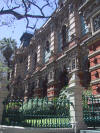 |
Palacio de los aguas
corrientes. Believe it or not, this used to
be a water reservoir. There were huge tanks inside. |
 |
Every big city has
its grand café. In Buenos Aires this is Café Tortoni |
 |
SALTA
The city of Salta two hours of flight
to the north-west in the region neighboring with Chile, Boliva and Paraguay.
Salta has a colonial atmosphere with the typical central square where people meet.
We stayed in the
Salta Hotel. |
 |
The main square (Plaza
de 9 Julio) at night |
 |
ditto (with cathedral) |
 |
Shopping area in
Salta |
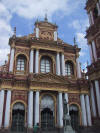 |
Iglesia San Francisco |
 |
Gondola trip to Cerro
San Bernardo (1,454m). As can be seen Salta is located in the pre-Andes at
about 1,200m |
 |
Excursion to Cafayete
(wine growing region) across the Quebrada del Río de las Conchas with
multi-colored sandstone (formations) |
 |
The Castel formation |
 |
Rock chaos |
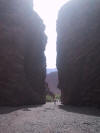 |
The "amphitheater"
gorge |
 |
Cafayate main square |
 |
Excursion to
Humahuaca which is very close to the Bolivian border |
 |
The Quebrada de
Humahuaca (UNESCO World Nature Heritage) |
 |
Also here there were
fantastic rock formations |
 |
Flowering cactus (Cardon)
with seven-colored mountain in the background in Purmamarca |
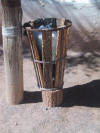 |
Waste bin made of
cactus wood (the local building material) in Purmamarca |
 |
This region was part
of the Inca empire. This is a pre-Inca castle (pucará) in Tilcara which was
reconstructed. |
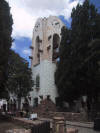 |
Main square of
Humahuaca with Inca-inspired walls |
 |
BARILOCHE
2 flight-hours south of Salta. A dramatic change from the colonial amtmosphere
to an alpine atmosphere comparable to Queenstown/NZ or the White
Mountains/NH. We stayed in the
Nevada Hotel. |
 |
Historical center of
(San Carlos de) Bariloche which was an attempt to create a Swiss-style
resort |
 |
Some more
contemporary allutions to Switzerland |
 |
Patagonia and in
particular Bariloche are famous for its chocolate (palaces) |
 |
The
"Catedral" ski region |
 |
Even though the ski
season was (unfortunately) already finished there was still a lot of snow.
From the cabin on top (Refugio Lynch) one could see the Chilean peaks. |
 |
Boat trip on Lago
Nahuel Huapi |
 |
Landing on the
Quetrihé Peninsula |
 |
Famous Bosque de
Arrayanes which rightly or wrongly is said to have inspired Walt Disney for
his Bambie Movie. The Arrayanes ("Myrten" in German) are usually only a bush
but find in this very confined place the right conditions to grow to full
trees |
 |
There were stunning
views abound |
 |
ditto |
 |
The famous
Llao Llao hotel |
 |
The real Llao Llao, a
mushroom which was also called "the bread of the Indians" as it can be eaten.
The mushroom enters the trunk after which the tree by-basses the mushrom and forms the knots as can be seen. |
 |
My brother golfing at
the Llao Llao while I was having afteroon tea in the hotel. Even though it was early spring, the course was already in
great condition. |
 |
EL CALAFATE
another
hour further south. A prime tourist location through its glaciers. We
stayed in the
Quijote Hotel. |
 |
The Perito Moreno
Glacier |
 |
The Perito Moreno
glacier enters Lago Argentina and pushes against Península Magallanes
cutting off part of the lake. This holds back the water of the southern part
of Lago Argentina which raises 20-30m over time until it develops such
pressure on the glacier that it breaks. 40 million tons of ice break off,
one of the most spectacular nature events our plant has to offer. This
happens every 2-7 years. |
 |
Perito Moreno moves
0.4m a day. As a result frequent "calfing" of the glacier can be observed. |
 |
Impressive beauty |
 |
Impressive size (the
glacier tip is 4-5km long) |
 |
Boat trip on Lago
Argentina to Parque Nacional Los Glaciares (UNESCO World Nature Heritage) |
 |
Enormous icebergs
floating on Lago Argentina |
 |
Icebergs with all
kind of shapes and sizes |
 |
One part of the lake
is cut of by moraine through which the icebergs cannot float. They are
clogged on the lake and pile up |
 |
Creek through the
moraine |
 |
Spectacular views à
discretion. |
 |
Approaching Uppsala
Glacier with a 6-7km long tip and a total area of 600km2. Behind the Uppsala
Glacier there is the Continential Ice shield which is 250km long |
 |
80m high glacial
walls |
 |
Spegazzini Glacier |
 |
ditto |
 |
4x4 trip close to El
Calafate |
 |
Rock formation called
"Sombreros Mexicanos" overlooking el Calafate. Sediments containing lots of
iron are enclosed in normal rock. A phenomena which only exists in a handful
other places in the world. |
 |
USHUAIA
the southern
most city in the world which is also a raising ski destination (the Swiss
national team trained here in Summer 2007). I think they might have even
stayed in the same
hotel as we did. |
 |
City center of
Ushuaia |
 |
Views in the Tierra
del Fuego National Park |
 |
Beaver dam. Beavers
were actually imported here and are now a hassle because they kill the
forests. |
 |
Here ends (or begins)
the Transamericana. This is the southern most place where one can go by car.
Cap Hoorn is actually on an island farther south. |
 |
Cormorans and sea
lions on an island in the Beagle Canal. |
 |
PENINUSLA VALDÉS
Whale watching on
Península Valdés (UNESCO World Nature Heritage) where every year up to 1'200
Southern Right Whales gather for having their babies. We first stayed in
Puerto Madryn,
then on the Península (Punta
Delgada) and then again in Puerto Madryn. |
 |
The whales got very
close. While I have been on many whale watchings, this is the first which
deserves the name. Where ever one looked, there were whales, some times one
saw up to 10 whales at the same time. |
 |
Baby whale angrily
beating the water for minutes calling for its mother |
 |
Another whale beating
the water with its tale fin |
 |
Another whale
breaching, in brief the whales did everything possible to make this trip
worth its money |
 |
Big Sea Elephant Bull
(about 3.5 tons). They grow as big as 6m and 4tons, can dive down to 1,500m
below waterline and stay there for two hours. They have muscles to compress
the lungs and build up haemoglobin which provides oxygen to the vital parts
of the body. Once they surface they are ready for another 2 hour trip with
3-4 minutes. The Sea Elephants spend most of their time in the water and
only come to the beach for having their babies and changing their skin. |
 |
Guanacos on the
Peninúsla |
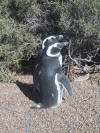 |
A 60'000 couples
strong colony of Magellan penguins |
 |
The penguins walked
around quite unimpressed by the visitors. They only got nervous when then
and when a pack of sea lions cruised along the shore. |
 |
The penguins go out
to fish for up to 24 hours and swim on average 70km away from the colony. They
bring back the food to their babies in their stomachs. |
| |
From Península Valdés
(technically Trewlew Airport) we flew back to Buenoes Aires and from there
directly via Madrid to Zurich. Argentina
is a spectacular and very easy country to travel. |
















